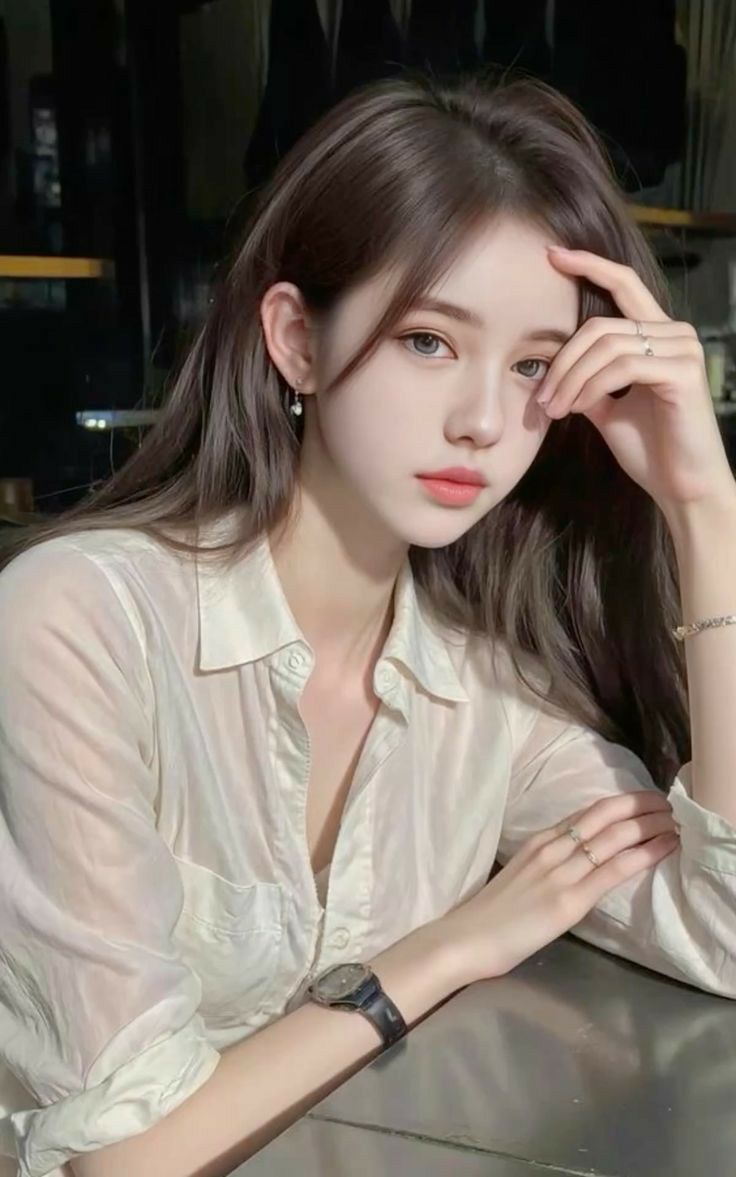Exploring the realm of AI-generated female faces through neural design brings forth a captivating narrative that delves into the intricacies of technology and artistry. This introduction sets the stage for a fascinating discussion that intertwines creativity with innovation, captivating readers from the outset.
Providing a detailed overview of the key concepts and insights surrounding the creation of AI female faces, this discussion aims to shed light on the intersection of technology and aesthetics in a thought-provoking manner.
Overview of the World’s Most Stunning AI Female Faces
Neural design involves the use of advanced neural networks to create AI-generated female faces that are incredibly realistic and visually stunning. These AI systems are trained on vast datasets of human faces to learn patterns, features, and expressions, allowing them to generate highly detailed and lifelike images.Using neural networks, AI designers can input specific parameters such as facial symmetry, skin tone, eye color, and hair texture to customize the generated faces according to their preferences.
The ability of neural networks to analyze and synthesize visual information results in the creation of unique and diverse female faces that showcase a blend of beauty and artistry.The significance of AI-created female faces in the digital design realm lies in their potential to revolutionize the way we perceive beauty standards and representation.
By leveraging AI technology, designers can explore new possibilities in character creation, visual storytelling, and virtual aesthetics, pushing the boundaries of creativity and innovation in the digital space.
Factors Influencing the Design of AI Female Faces
When it comes to designing stunning AI female faces, several key factors play a crucial role in creating visually appealing and realistic results. These factors include symmetry, features, expressions, and cultural preferences.
Symmetry
Symmetry is a fundamental factor in the design of AI female faces as it is often associated with beauty and attractiveness. Designers aim to create faces with balanced features on both sides to enhance the overall appeal of the AI-generated face.
Features
The specific features of AI female faces, such as the shape of the eyes, nose, lips, and jawline, are meticulously designed to achieve a harmonious and aesthetically pleasing look. These features are carefully adjusted to create a face that is both unique and universally appealing.
Expressions
Expressions are another important aspect of designing AI female faces. The ability to convey emotions through facial expressions adds a human-like quality to the AI-generated faces, making them more relatable and engaging to users.
Cultural Preferences and Trends
Cultural preferences and trends also play a significant role in the design of AI female faces. Designers take into account cultural standards of beauty, such as facial proportions and skin tone, to ensure that the AI faces resonate with a diverse range of audiences worldwide.
Comparison with Real Female Faces
When comparing AI-generated female faces with real faces, it is important to analyze the similarities and differences to understand the challenges and opportunities in creating realistic and natural-looking AI faces.
Similarities and Differences
AI-generated female faces often exhibit a high level of detail and symmetry, similar to real faces. However, subtle imperfections and nuances that make human faces unique can sometimes be lacking in AI-generated faces. Real faces may also show more variation in skin texture, expressions, and features due to individual characteristics.
Challenges in Realism
- One of the main challenges in making AI female faces appear realistic is achieving natural-looking skin texture and tone. Mimicking the complexity and variety of human skin can be difficult for AI algorithms.
- Another challenge is capturing the subtle microexpressions and emotions that make real faces expressive and lifelike
. AI models may struggle to replicate the dynamic range of human facial movements accurately.
- Ensuring diversity and inclusivity in AI-generated faces is also a challenge, as biases in training data can lead to limited representation of different ethnicities, ages, and features.
Enhancement and Alteration
AI technology can be used to enhance or alter facial features for aesthetic purposes, such as smoothing skin, adjusting facial proportions, or changing hair color. This capability opens up new possibilities for creative expression and customization in digital art and design.
Ethical Considerations in AI Female Face Design
AI technology has advanced rapidly in recent years, leading to the creation of stunningly realistic female faces. However, along with this progress comes a host of ethical considerations that must be carefully examined.Issues related to consent are paramount when it comes to AI-generated faces.
Without the explicit permission of the individuals whose faces are being used, there is a risk of violating their privacy and autonomy. It is crucial to consider how these faces will be used and ensure that proper consent protocols are in place.Privacy concerns also arise in the context of AI-generated faces.
These faces can easily be misused for malicious purposes such as identity theft, catfishing, or deepfake videos. It is important to establish clear guidelines on the ethical use of AI-generated faces to prevent such abuses.To address these ethical concerns, responsible design practices must be implemented in AI face generation.
Transparency about the source of the faces, data privacy protection, and strict regulations on the use of AI-generated faces are essential. Collaboration between designers, ethicists, and policymakers is crucial to ensure that AI technology is used ethically and responsibly.
Ensuring Informed Consent
- Develop clear guidelines for obtaining consent from individuals whose faces are used in AI generation.
- Provide detailed information on how AI-generated faces will be used and the potential risks involved.
- Allow individuals to easily opt-out of having their faces used in AI projects.
Preventing Misuse of AI-Generated Faces
- Implement strict regulations on the use of AI-generated faces to prevent identity theft and other malicious activities.
- Educate the public on the risks associated with AI-generated faces and how to identify misuse.
- Collaborate with tech companies and law enforcement agencies to combat the spread of deepfake content.
Closure
As we conclude our exploration of the world's most stunning AI female faces according to neural design, we reflect on the transformative power of artificial intelligence in reshaping digital design landscapes. This summary encapsulates the essence of our discussion, leaving readers with a sense of wonder and curiosity about the endless possibilities that lie ahead.
Questions and Answers
What factors influence the design of AI female faces?
The key factors include symmetry, features, expressions, and cultural preferences.
How do AI-generated female faces compare to real faces?
There are similarities and differences, with challenges in achieving realism and natural appearance.
What ethical considerations are involved in AI female face design?
Ethical implications include consent, privacy, and the potential misuse of AI-generated faces.











